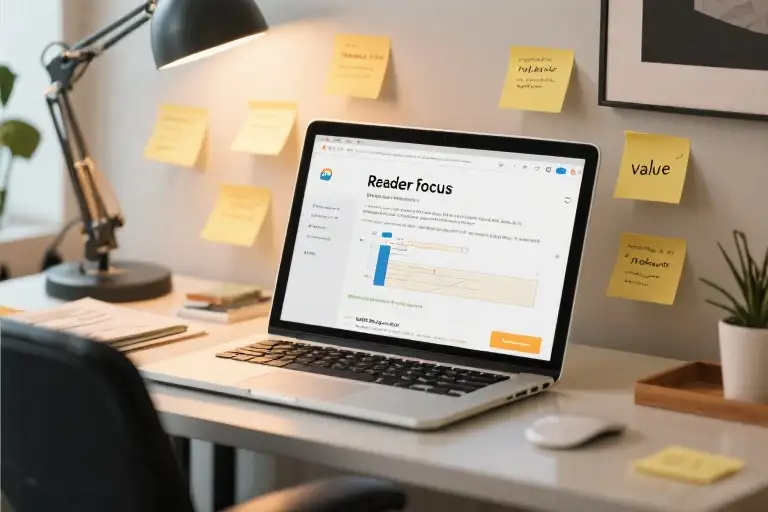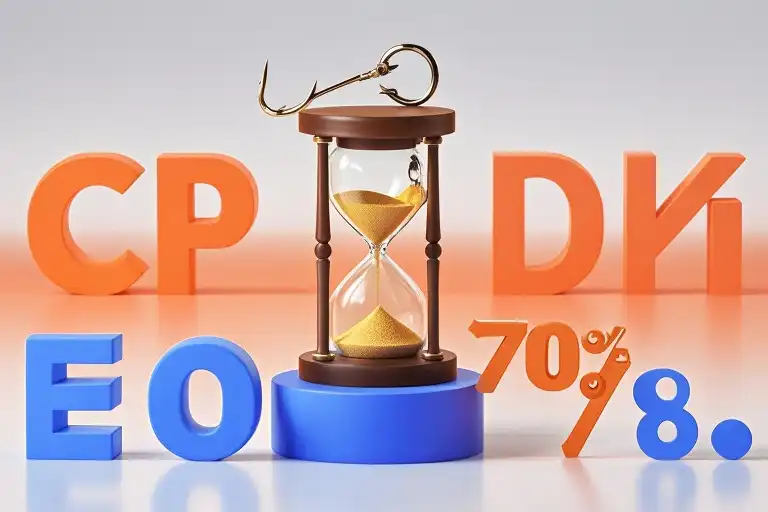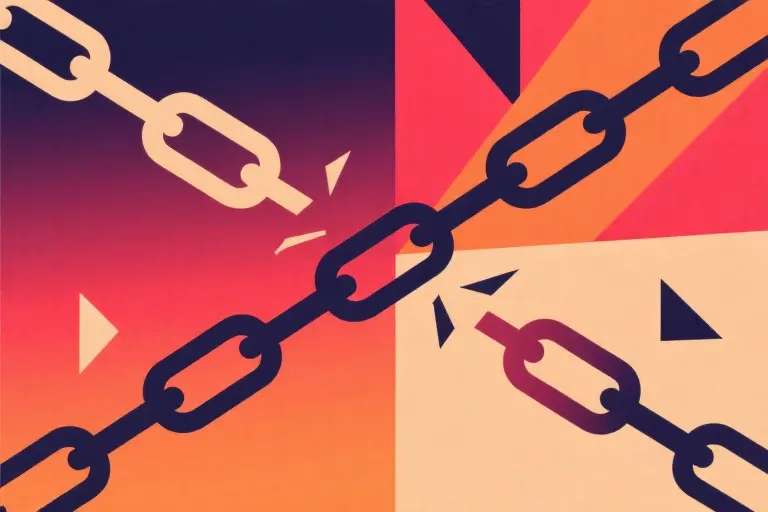The clock showed 8:17 AM on March 14, 2023, when my finger hovered over the login button. Just twenty-four hours earlier, my dashboard displayed a healthy $2,000 in daily revenue. Now, the analytics panel glared back at me with alarming red indicators – reach down 62%, engagement plummeting, sales evaporating like morning fog.
For three frantic hours, I combed through every possible explanation. Had I violated community guidelines? Was there a technical error? Did my content suddenly become irrelevant? The brutal truth emerged like a slap: I’d built my livelihood on rented digital property where rule changes happen without warning or recourse. My business hadn’t failed – the platform had simply moved the goalposts.
This wasn’t some abstract risk from a business textbook. My coffee grew cold as I watched real-time sales notifications stall completely. That familiar panic crept in – the same dread Instagram shop owners felt during the 2022 algorithm shift, the same vulnerability TikTok creators experience with every policy update. The numbers told an undeniable story: when you don’t own your platform, you’re always one policy change away from disaster.
What shocked me most? I’d done everything right by platform standards. Created quality content, engaged my audience, followed best practices. Yet there I sat, powerless, realizing the fundamental flaw in my strategy. Building on someone else’s platform is like opening a boutique in a mall that can suddenly triple your rent or change the floorplan to hide your store. The convenience comes at an existential cost.
That morning marked my digital wake-up call. The metrics bleeding out before me weren’t just numbers – they represented months of work, relationships with customers, and financial stability, all subject to the whims of a platform that saw me as expendable. It crystallized a truth every content creator and online entrepreneur must confront: true business ownership begins when you control the digital real estate.
As my shaking hands closed the analytics tab, a resolve hardened. This wouldn’t be another casualty story about “the algorithm.” It would become the catalyst for building something durable – a lesson wrapped in the kind of visceral, personal experience that makes you check your own foundations. Because in our digital age, platform dependence isn’t just risky – it’s the silent killer of otherwise viable businesses.
The Illusion of Platform Dependence
That Tuesday morning started like any other. I reached for my phone before my coffee, bleary-eyed but eager to check the overnight sales figures. The numbers should have been climbing – we’d just launched a new product line. Instead, my stomach dropped as I saw the dashboard: a 72% drop in traffic overnight. My first thought? ‘What did I do wrong?’
After three frantic hours checking analytics, contacting support, and reviewing our content, the brutal truth emerged: we’d done nothing wrong. The platform had simply changed its algorithm – again. Our thriving business, built painstakingly over eighteen months, had become collateral damage in someone else’s system update.
The Ticking Time Bomb Behind Convenience
We’ve all been seduced by the siren song of established platforms. The promise is irresistible:
- Instant access to millions of users
- Built-in analytics and tools
- No technical headaches
But this convenience comes with invisible strings – strings that can strangle your business without warning. Consider these recent platform earthquakes:
2021 Instagram Algorithm Shift
Organic reach for small businesses dropped by 30-60% overnight as Meta prioritized Reels over static posts. Overnight, boutique owners and coaches who’d built followings found their posts seen by barely 5% of their audience.
2022 TikTok Shadowban Wave
Creators with 100K+ followers suddenly saw views plummet to triple digits. No explanations, no appeals – just the silent treatment from the algorithm gods.
2023 Medium Purge
Hundreds of writers woke up to banned accounts and lost income streams. Years of content archives – gone without recourse.
These aren’t isolated incidents. They’re the predictable growing pains of platforms that must eventually prioritize shareholders over users. The uncomfortable truth? If your business lives entirely on rented digital land, you’re always one policy change away from disaster.
Identifying Your Single Point of Failure
Every platform-dependent business has a vulnerability – what engineers call a ‘single point of failure.’ For digital creators and entrepreneurs, it’s often:
- Algorithm Dependence
Your visibility hinges on black-box algorithms designed to serve the platform’s goals, not yours. When Instagram decided video was the future, photographers lost their livelihoods overnight. - Account Vulnerability
A single complaint, mistaken flag, or automated filter can lock you out permanently. I’ve seen six-figure businesses vanish because of:
- Automated copyright claims
- ‘Suspicious activity’ false positives
- Competitor false reporting
- Policy Whiplash
Remember when YouTube demonetized entire categories overnight? Or when Etsy changed its fee structure, squeezing small artisans? Platform rules evolve to serve corporate interests – your sustainability isn’t part of that equation.
The wake-up call comes too late for most. It’s not until the rug gets pulled out that we realize we’ve been building on quicksand. But here’s what veteran platform survivors know: the solution isn’t abandoning these tools – it’s making them work for you rather than the other way around.
The Platform User’s Dilemma
Platforms aren’t evil – they’re just not designed to be permanent homes for your business. Think of them like:
- A busy marketplace where you set up a stall (but don’t own the land)
- A high-traffic billboard (that the owner can repaint anytime)
- A rented storefront (with a landlord who changes the locks without notice)
The smartest digital businesses I know treat platforms like fishing nets – tools to gather their audience, not containers to keep them in. They follow the 70/30 rule:
- 70% of effort goes to building assets they own (websites, email lists, customer databases)
- 30% goes to platform presence and audience acquisition
This isn’t theoretical. When Pinterest changed its algorithm in 2019, food bloggers who’d diversified their traffic sources survived. Those who hadn’t? Many closed up shop within months. The pattern repeats with every platform shift: the prepared endure, the dependent suffer.
Your Platform Risk Assessment
Ask yourself these revealing questions:
- If [your main platform] disappeared tomorrow, what percentage of your business would survive?
- Do you have direct contact information for your most valuable customers/clients?
- Can you run promotions or change your business model without violating platform TOS?
- Who ultimately controls the relationship with your audience – you or a third party?
For most of us, the answers are uncomfortable. But this discomfort is useful – it’s the catalyst for building something truly durable. In the next section, we’ll explore exactly how to make the shift from digital tenant to property owner, starting with tools so simple you can begin today.
The Digital Ownership Revolution: From Tenant to Landlord
That morning when my business metrics crashed was the day I truly understood the difference between renting digital space and owning it. The realization hit harder than any algorithm change: building on rented land means you’re always one policy update away from homelessness.
The Great Shift: Platform Serfdom to Digital Sovereignty
Most online businesses operate under the same dangerous illusion I did – mistaking platform presence for business ownership. Here’s the fundamental truth we’ve overlooked:
- Rented platforms = Temporary access to an audience (until terms change)
- Owned platforms = Permanent equity in your digital assets
Consider this compounding effect: Every blog post on your own website becomes a permanent asset that:
- Increases domain authority (improving future content visibility)
- Builds evergreen backlink opportunities
- Creates compounding organic traffic (unlike social posts with 24-48 hour lifespans)
The Ownership Advantage: Case Studies That Changed My Mind
Case 1: The Recipe Blogger Who Outlasted Pinterest
When Pinterest shifted from free organic reach to paid prioritization in 2021, Sarah’s traffic dropped 72% overnight. But because she’d been systematically redirecting followers to her self-hosted recipe site for two years:
- Maintained 58% of total traffic
- Increased email subscriber conversions by 3x
- Now earns more from direct sponsorships than ad revenue
Case 2: The Consultant Who Dodged LinkedIn’s Algorithm Roulette
After seeing colleagues’ engagement rates fluctuate wildly, Mark began publishing long-form content exclusively on his membership site. The results after 18 months:
- 40% higher client conversion rate
- 3.2x more repeat business
- Complete immunity to platform changes
The Math They Don’t Teach You: Website Equity Formula
Your digital property’s value grows through:
(Owned Content × Search Visibility) + (First-Party Data × Engagement Depth)
= Sustainable Business ValuePractical examples:
- A 50-post blog attracting 10,000 monthly visitors becomes a $15k-$50k asset
- An email list of 5,000 engaged subscribers can generate $5k-$15k monthly
- A simple membership site with 200 paying members at $20/month = $48k/year
The Psychological Barrier (And How To Break It)
We resist ownership because:
- Instant Gratification Bias: Social platforms offer quick (but fleeting) wins
- Effort Misjudgment: Overestimating website maintenance difficulty
- Visibility Fallacy: Mistaking platform UI for actual audience reach
The solution? Start treating your website like:
- Your primary business address (not a backup plan)
- An appreciating asset (not a cost center)
- Your customer data vault (not just a brochure)
Your Next Step: The 1% Ownership Shift
Begin transferring value today with these micro-actions:
- Content Repurposing: Next social post should tease content available ONLY on your site
- Data Capture: Add an email signup form to your existing social profiles
- Asset Flip: Turn your most popular platform post into a pillar page on your domain
Remember: Every piece of content you publish on rented land is essentially a billboard you can’t move. On your own platform? It’s permanent real estate that keeps working for you.
Building Your Risk-Proof Platform: A 3-Stage Blueprint
Stage 1: Emergency User Asset Backup (72-Hour Action Plan)
The moment I realized my business could vanish with a platform update, my first move was securing what mattered most – my audience. Here’s how you can protect your digital assets before the next algorithm earthquake hits:
Step 1: Extract Your Goldmine
- Export all platform contacts (Facebook Audience Insights, Instagram followers list)
- Capture email addresses from past customers (Shopify/Stripe exports work wonders)
- Save engagement data (top commenters, most active followers)
Step 2: Create Your Lifeboat
- Set up an email service provider (ConvertKit or MailerLite for beginners)
- Segment your list by engagement level (hot leads vs. casual followers)
- Design a simple welcome sequence (3 emails explaining your migration)
Pro Tip: Use free tools like Google Forms to create an immediate opt-in page. I gained 427 subscribers in 48 hours by offering a “Platform-Proof Content Kit” during my transition.
Stage 2: Minimum Viable Website (3 Budget Options)
Think of this as your digital homestead – start small but start smart.
$0 Budget (Bootstrapper’s Special)
- Carrd.co single-page site (takes 90 minutes)
- Convert existing Instagram highlights to website sections
- LinkTree alternative with Mailchimp signup form
$50/Month (Serious Builder)
- Webflow basic CMS plan (no coding needed)
- Pre-made template from ThemeForest ($20)
- Zapier automation to sync platform content
$200/Month (Enterprise Ready)
- Ghost Pro for membership sites
- WordPress with Astra Pro theme
- MemberPress for course creators
Case Study: Sarah’s Tea Co. moved from Etsy to a $29/month Squarespace site. Within 3 months, her profit margin increased by 40% by avoiding platform fees.
Stage 3: Dual-Channel Traffic System
This is where the magic happens – making platforms work FOR your owned property.
The 80/20 Content Rule
- Post 80% of content on your website first
- Repurpose 20% as teasers for social platforms
- Always include “Read the full story” links
Traffic Funnels That Work
- Instagram Story → Email Capture → Blog Post
- YouTube Description → Lead Magnet → Webinar
- TikTok Bio → Quiz → Product Page
My Personal Hack: I use Canva to create platform-specific graphics that all route to my website’s newsletter signup. Last month this brought in 312 new subscribers from Pinterest alone.
Your Next Moves
- Today: Export your Instagram follower list (Settings → Privacy → Data Download)
- This Week: Set up a Carrd page with email capture
- This Month: Launch one piece of website-exclusive content
Remember: Every great digital empire was built on owned land. Your website isn’t just another platform – it’s the foundation of your business sovereignty.
When the Next Algorithm Update Hits: Victim or Victor?
The digital landscape shifts beneath our feet with alarming regularity. One morning you’re riding high on engagement metrics, the next you’re staring at analytics that look like a crime scene. This isn’t speculation – it’s the reality for thousands of creators who’ve built on rented digital land.
5 Warning Signs You’re Overexposed to Platform Risk
- The 80% Rule: If more than 80% of your traffic/revenue comes from a single platform (Instagram, TikTok, Medium), you’re essentially walking a tightrope without safety nets. Recent data shows businesses crossing this threshold experience 3x more volatility during platform updates.
- Data Blindness: Can’t directly contact your top 100 customers? When platforms restrict access to follower emails or analytics (like LinkedIn’s 2022 API changes), you’re operating with intentional blindfolds.
- Template Content: If your posts follow platform-specific formats (TikTok dances, Instagram Reels templates), you’re trapped in their creativity prison. The 2023 Pinterest layout update decimated accounts using rigid pin templates.
- Policy Anxiety: That nagging fear every time you post – “Could this get me shadowbanned?” – indicates unhealthy platform dependence. Healthy businesses don’t operate under constant threat of arbitrary punishment.
- Growth Ceiling: When platform growth stalls despite quality content, you’re likely hitting invisible algorithmic barriers. The Instagram “30k follower wall” phenomenon proves even successful creators hit artificial limits.
Your 24-Hour Platform Independence Starter Kit
Today’s Mission: Claim your digital territory with these irreversible steps:
- Domain Registration (15 minutes)
- Search [yourname].com or [yourbusiness].com on Namecheap or Google Domains
- Even if not building immediately, owning your primary domain prevents:
- Domain squatting (competitors buying your name)
- Future availability issues
- Brand confusion
- Pro Tip: Register common misspellings as redirects
- Email Capture Upgrade (1 hour)
- Add a simple “Join My Inner Circle” link in bios/profiles
- Use Carrd.co (free plan) to create a basic opt-in page
- Connect to MailerLite (free up to 1,000 subscribers)
- Example copy: “Platforms come and go – let’s stay connected directly”
- Content Bridge (30 minutes)
- Next post should include: “Love this content? Get future updates directly via [yourdomain.com/newsletter]”
- This begins training your audience to look beyond platforms
The Fork in the Road
Two paths now diverge:
Path A: Continue the platform treadmill – chasing algorithms, praying to the engagement gods, and resetting progress with every policy change.
Path B: Start transferring value to owned assets – where every email subscriber and website visitor compounds indefinitely.
The terrifying truth? Path A feels easier today but gets harder every year. Path B feels difficult today but gets easier with each step.
Your next move? That blinking cursor in your domain search bar is waiting.





